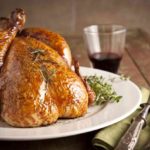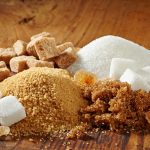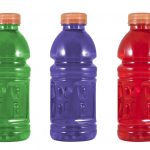Breaking News: Real Food Fuels the Body Best
I know, I know. It sounds crazy, right? Eating real food to prepare for an endurance event the next day, such as the Ironman I raced in last weekend up in Sonoma? And not just eating real food… (are you ready for this?) but not focusing on an abundance of carbohydrates in anticipation for the rigors of the day to come, preparing the body to be fueled to the brim with starch; rather eating in a balanced manner with fibrous veggies, ample, varied fat sources and natural proteins? Well, guess what? Turns out, it works. And not just for me. Above, you’ll see a pic of the same meal I eat the night before every ironman, marathon, half ironman and even 10k. Chicken, veggies, starch (potato or yam), and plenty of olive oil. For years, I’ve been of the mindset that having a healthy approach to eating (sure, call it Paleo if you wish; knowing that since it’s become a thing, it may not really be Paleo anymore and you may be better off just calling it eating fresh, locally and in season) as much as possible, both on a daily basis as well as around training, is the way to best support one’s athletic engagement as well as overall health. Some coaches will suggest there are two facets of eating: one for general day to day activity, going to work or school and simply being alive, and another to follow during training and that the two might be vastly different from one another. The former might be based on real, whole veggies, proteins and fats while the latter could be solely refined sugars via sports drinks, bars, gels, blocks and the like. In fact, it’s not really just some experts that might implement these guidelines, it might be more like most of them. Let’s face it; it’s still more common to read advice in any triathlon or running magazine or website that tells us we need carbs, and lots of them, in order to prepare for our training and racing. So here I am going against the grain (pun intended). It serves me well and has done for nearly 15 years at this point, which is why I was thrilled to read a recent article in the Telegraph, entitled “How to Eat Like a Tour de France Cyclist”. (1) In it, we learn that Team Sky “embraces science, but we also promote a natural approach to food,” explains Dr James Morton, head of nutrition for the team and an associate professor in the Faculty of Science at Liverpool John Moores University. “Our riders eat food that grows in the ground or on a tree and protein from natural sources. They need energy, but they also have to stay lean and healthy with a strong immune system. A natural diet is the best way to achieve this.” Hmmm… sounding familiar? Keep in mind that this piece is not a post about being “Paleo” but rather eating real food versus attempting to survive on copious amounts of man made sugar in packages. And they’re not eating a high carb diet made of fruits either; in fact, I was even more excited to learn that fat plays a big role in their regime, both in fueling the cyclists as well as keeping them lean. “Professional cyclists may boast spoke-thin physiques, but fat remains on the menu. “Fat is important for everything from energy release and muscle health to immunity, but by eating the right food the fat takes care of itself,” added Dr Morton later in the article. Carbohydrates are eaten, of course, but in a strategic manner and “desserts are rarely on the menu” either. So important for everyone to realize that desserts can be a part of someone’s overall routine, but not on a daily basis. They’re called a treat for a reason; that’s what they’re meant to be! If the TDF cyclists don’t need them regularly, neither do we, us common folk! My hope is that the awareness is growing, both on the professional side, such as the most elite cyclists in the world, as well as age group athletes such as myself, who are able to perform to their capacity largely due to what they’re putting in their bodies. And what is that? To recap- it’s food. Three meals a day; each of which follows a common template of ample veggies, moderate protein and a nice, healthy serving of fat. Add a small amount of low glycemic fruit, like berries now and then, and position some starch, such as yam to factor in to be a part of a meal the night before a race. Allow your body to shift over time to becoming more efficient at using fat as its fuel and implement some trial and error to determine when and if your training and racing warrants adding in any exogenous carbohydrate to help performance on the day of the event. I’m not suggesting that I never take a swig of cola at the end of an Ironman or consume a small amount of carbohydrate during an event, because I do, but again… it’s just during the event. By transitioning the body away from relying on carbs during training, which flows beautifully into moving away from using them on a daily basis and becoming fat adapted, we create a single nutrition regime that we follow day in and day out, across the board. If, at the end of the year, you’ve raced five times and taken in a few gels or tailwind during the race, but have eliminated the hundreds you used to take over the course of the year in favor of teaching your body to use fat as it’s fuel, I’d say you’re in a very, very good place. Learn more about how to provide your body the opportunity to transition into a fat burning machine. Regardless of if you need to shed weight or not, or even if you’re an athlete or not, it behooves all of us to dial down and clear out the sugar. All of it! (1) “How to Eat Like a Tour De France Cyclist.” The Telegraph. Telegraph Media Group, n.d. Web. 03 Aug. 2016





